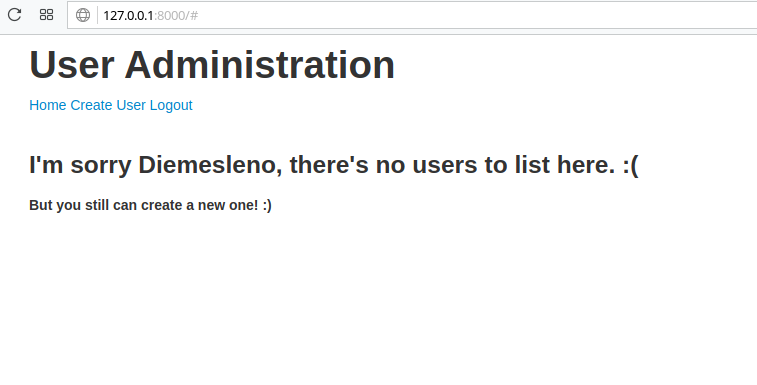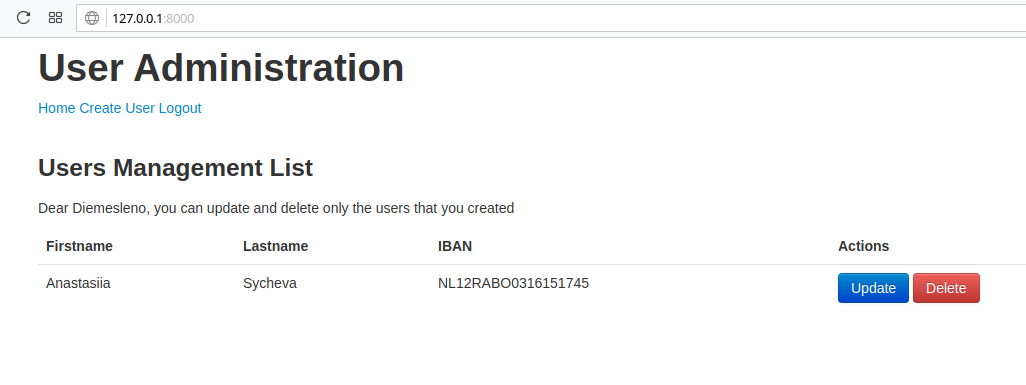Simple CRUD using Google Auth.
It is possible to create an account using Google Authentication and after that create and manage users.
- Python 3.6.4
- Django 2.0.2
- PostgreSQL 9.5+
Please implement a small Django application to manage (CRUD) users and their bank account data (IBAN). Required fields are first name, last name and IBAN. Data should be validated.
- Administrators of the app should authenticate using a Google account
- Administrators should be able to create, read, update and delete users
- Restrict manipulation operations on a user to the administrator who created them
- Use PostgreSQL as the database backend
- Use Python 3.x
- Write documentation on how to setup, run and use your implementation
- Error Tracking with Sentry
Set up a virtual machine environment using vagrant (provisioned by Puppet/Salt/Ansible/Bash - whatever suits you best) or docker-compose to run the test task including some short documentation.
Any Operating System with docker/docker-compose installed:
Google Auth:
a) Access https://console.developers.google.com/apis/credentials/oauthclient/
b) Generate a credential
c) Configure as origin:
http://localhost:8000
and
http://127.0.0.1:8000
d) Configure as authorized redirections:
http://localhost:8000/auth/complete/google-oauth2/
and
http://127.0.0.1:8000/auth/complete/google-oauth2/
e) Save and copy the Cliend ID and Secret key
f) Clone the project:
git clone https://github.com/diemeslen0/dcrud
g) Enter in the project directory:
cd dcrud
h) Edit the settings.py file and add the Google Auth Key (Client ID) and Secret
on lines 142 and 143.
i) Optional - Enabling Sentry:
- Uncomment line 50 (raven)
- On line 159, add yout Sentry Key
j) Build the image with docker-compose:
docker-compose build
k) Run the container:
docker-compose up -d
l) Exscute the migrate:
docker-compose run web python manage.py migrate
m) Open a browser and try it:
http://127.0.0.1:8000
Authentication with Google Account will create a user with superuser power (administrator).
With this power you can create new users without giving them admin permissions.
ou can see all users (non admin), but you can manage only your own ones.- 0.1.1
- Adding Sentry (Error Tracking)
- 0.1.0
- Dockerfile e Docker-Compose
- 0.0.9
- Templates
- 0.0.8
- User Views
- 0.0.7
- User Form
- 0.0.6
- User Model
- 0.0.5
- User URLS
- 0.0.4
- Project URLS
- 0.0.3
- Application user creation
- 0.0.2
- Settings configuration
- 0.0.1
- Project creation
Diemesleno Souza Carvalho – @diemesleno – diemesleno@gmail.com







